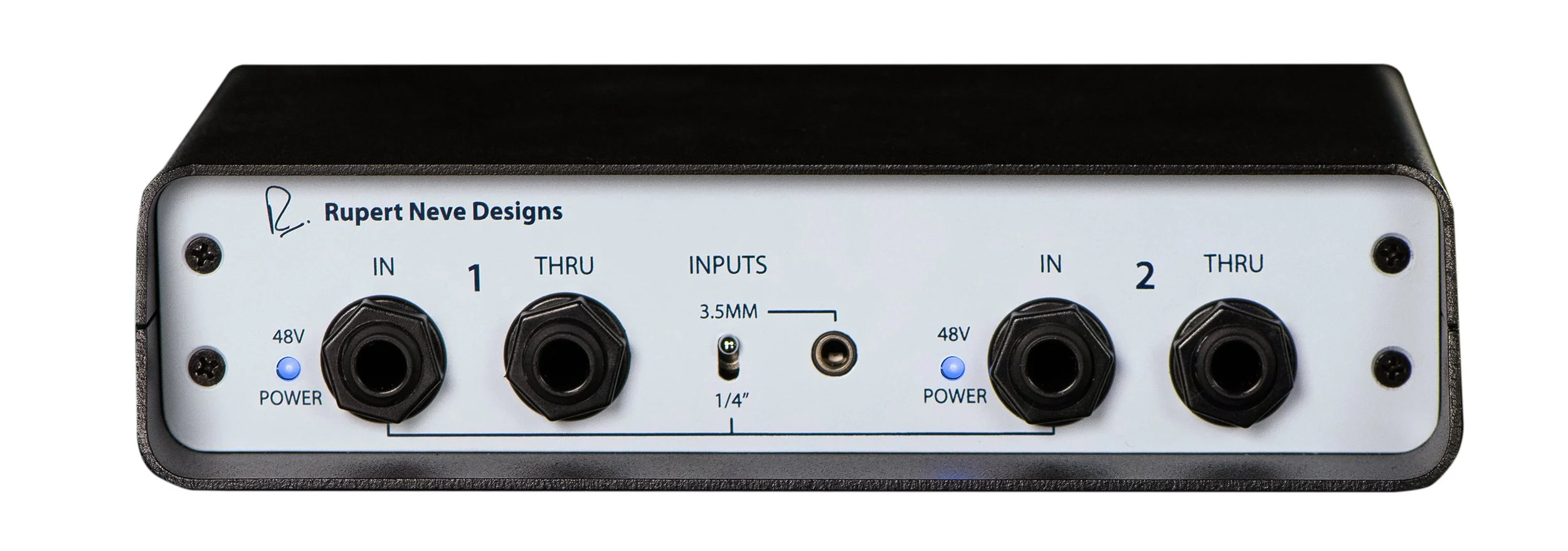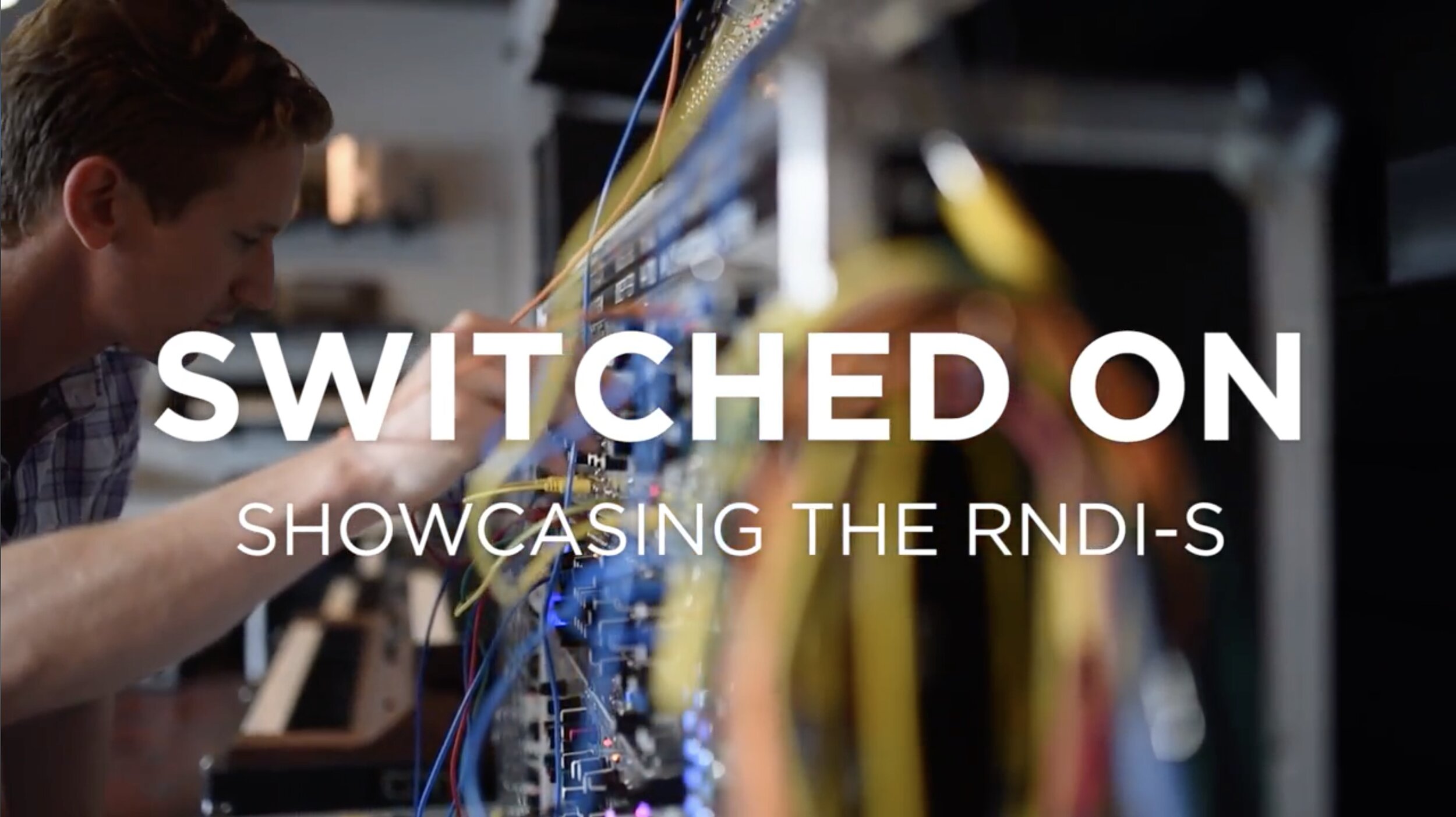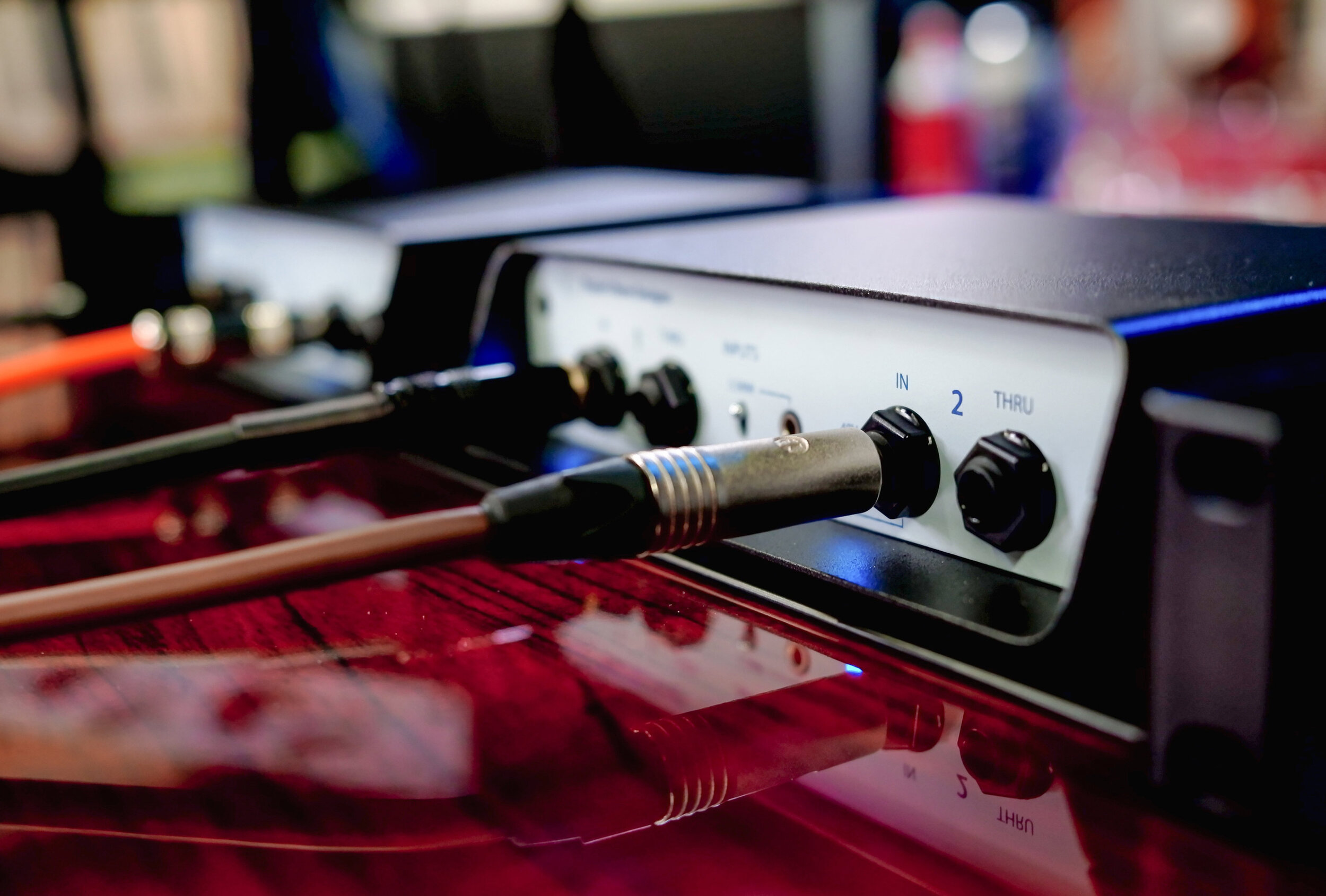
RNDI-S
Stereo Active Transformer Direct Interface
OVERVIEW / MEDIA / FEATURES / REVIEWS / SPECS & RESOURCESAn expanded two-channel version of our wildly popular RNDI, providing massive tone & headroom for all of your instruments & stereo sources.
The RNDI-S contains custom Rupert Neve-designed output transformers and class-A, discrete FET input stages. This carefully designed combination is the key to the unparalleled performance of the RNDI-S, delivering a powerful and vibrant direct sound that captures the full harmonic depth of basses, guitars, acoustic instruments, pre-recorded material and even consumer devices via the 3.5mm stereo input jack.
With portable, powerful, larger-than-life tone, the RNDI-S is ready to make your stereo or mono direct sources shine.
“Wow. So THAT is what my Nord is supposed to sound like. Game changer.”
The Development of the RNDI
After coming into existence during an experimentation with new transformer designs, the RNDI was fine-tuned over a series of listening tests against the most popular high-end DIs available. It was in these tests where the RNDI always seemed to add another dimension to the sound and bring the instruments to life. The lows felt richer, deeper and fuller, and the highs had outstanding clarity without any added harshness.
Most importantly, the design team noted:
“As musicians, the RNDI consistently stood out as the DI we wanted to play through.”
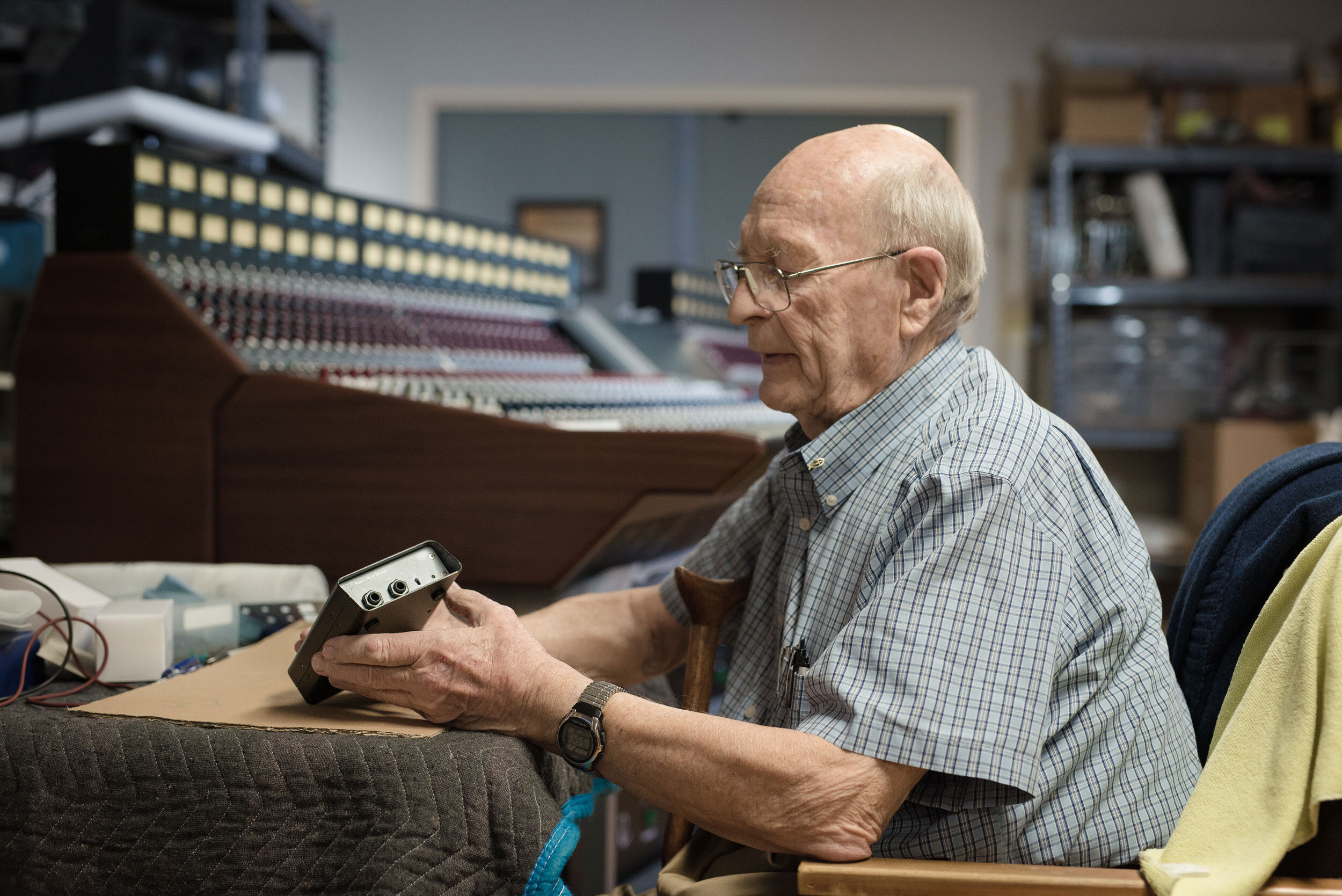
Signature Sound
The signature sound of the RNDI-S is the result of new Rupert Neve-designed output transformers and class-A, discrete FET input stages. The carefully orchestrated union of these elements is key to the accuracy, tone and response of the RNDI-S.
THE TRANSFORMERS
The custom output transformers provide exceptional isolation while introducing musical harmonics and dimension to the sound. The low impedance, transformer-balanced outputs excel at driving long cable runs, and performance is immensely consistent regardless of the connected equipment. This is very important for both live and studio environments where the audio signal may travel over 100ft before hitting an amplifier.
THE CLASS-A, DISCRETE FET AMPLIFIERS
The class-A, discrete FET input stage in the RNDI-S is powered by 48V phantom, providing a high impedance input of 2.2M Ohms that ensures consistent performance with a wide variety of instruments. The class-A design introduces no crossover distortion to the signal, which can add upper-order odd harmonics that are musically dissonant in nature. With the RNDI-S, the majority of harmonic content is a pleasing combination of 2nd order (octave) and 3rd order (fifth above octave). These musically relevant harmonics, present in subtle amounts, enhance the richness of the original signal and provide a distinctly musical response. And the discrete nature of the RNDI-S design means there are no ICs or digital components that can have negative effects on the tone.
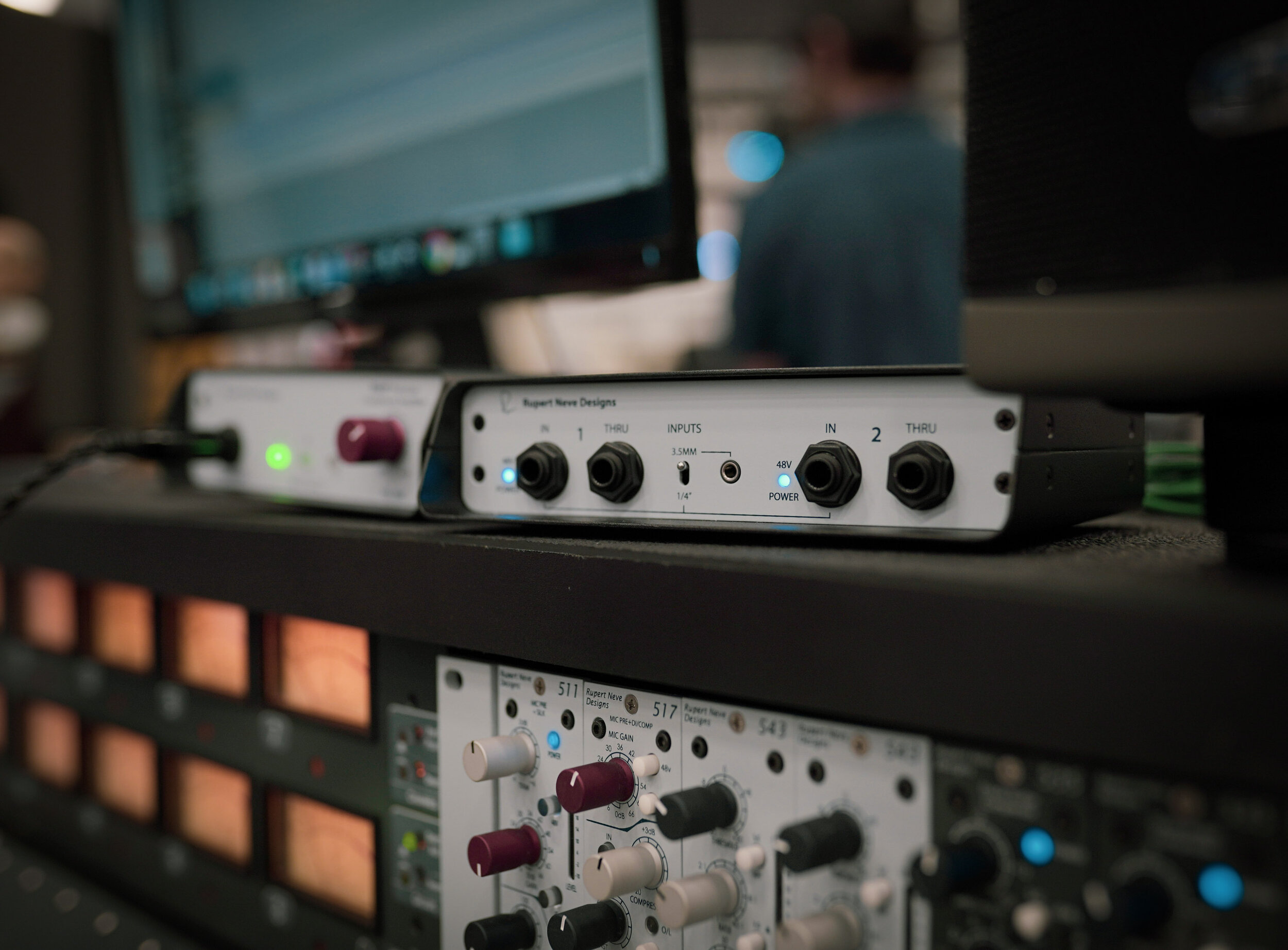
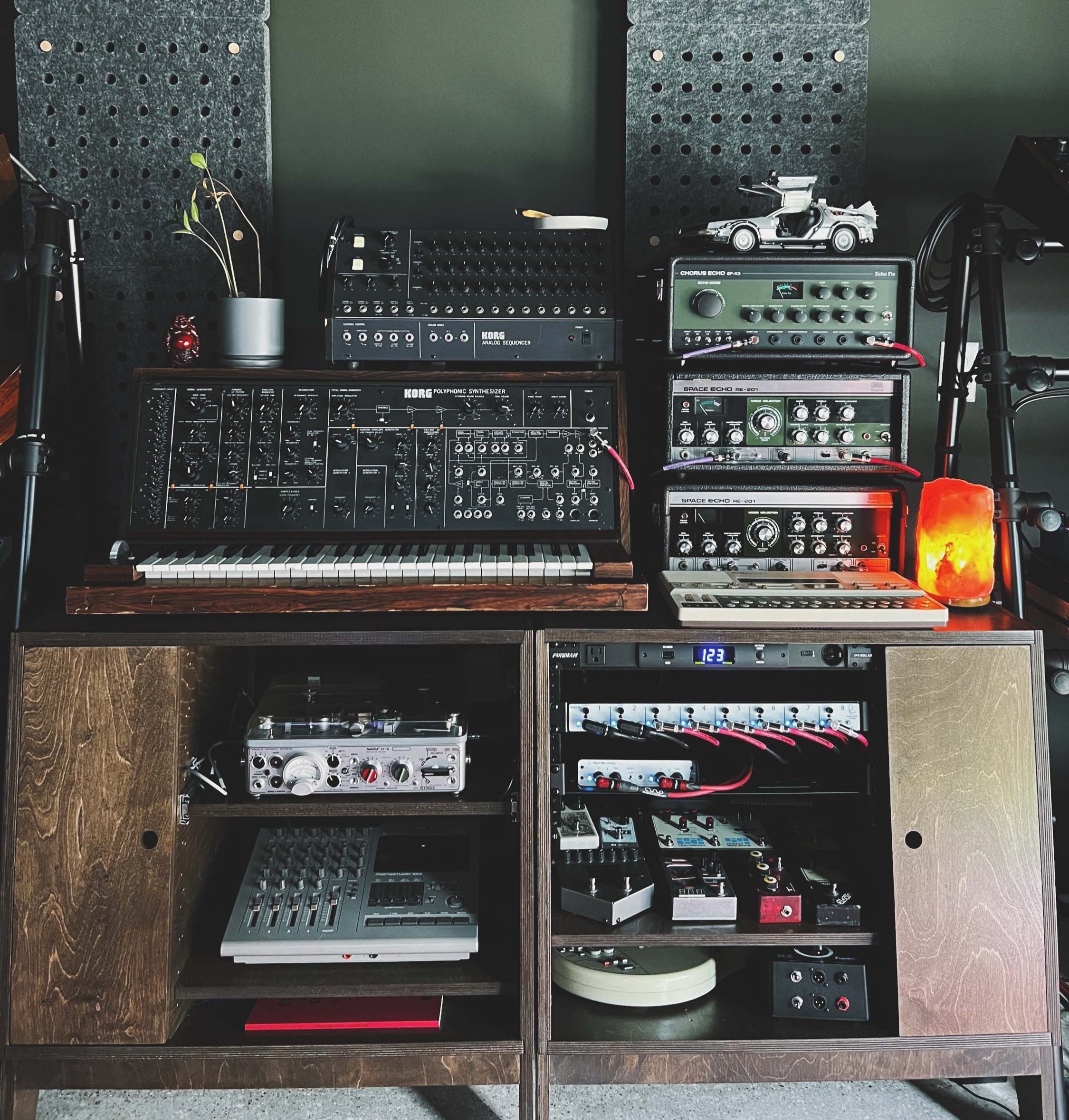
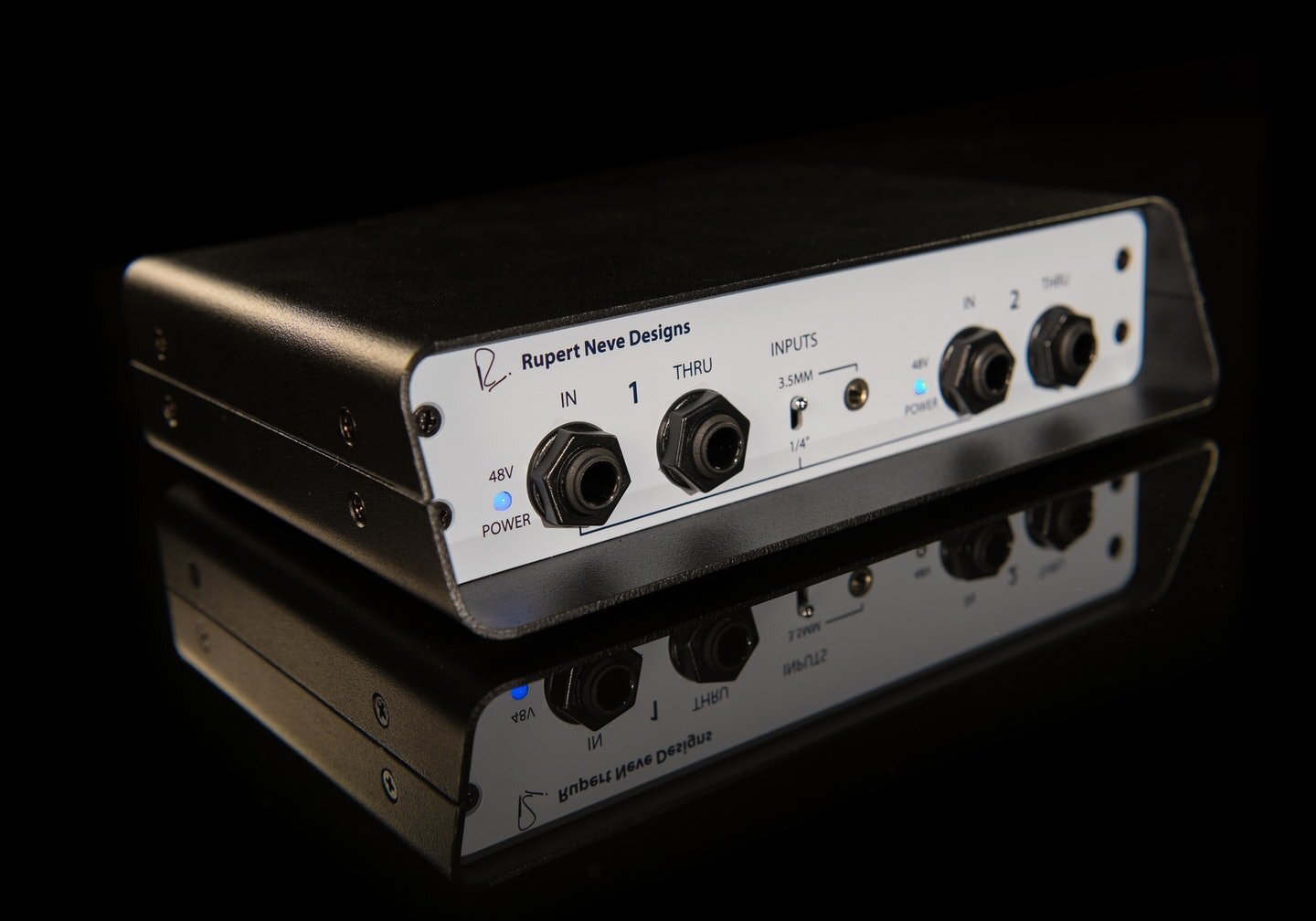
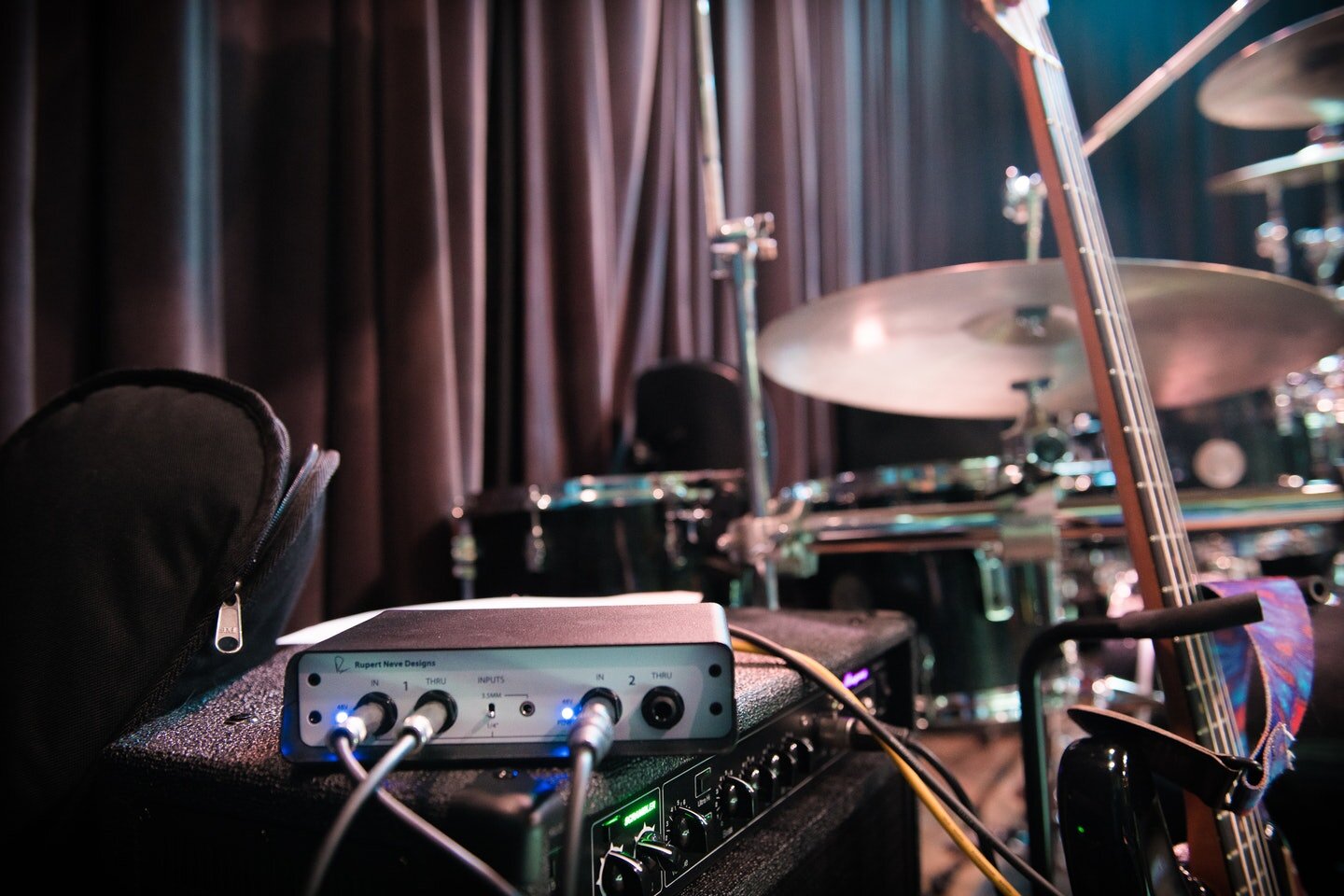
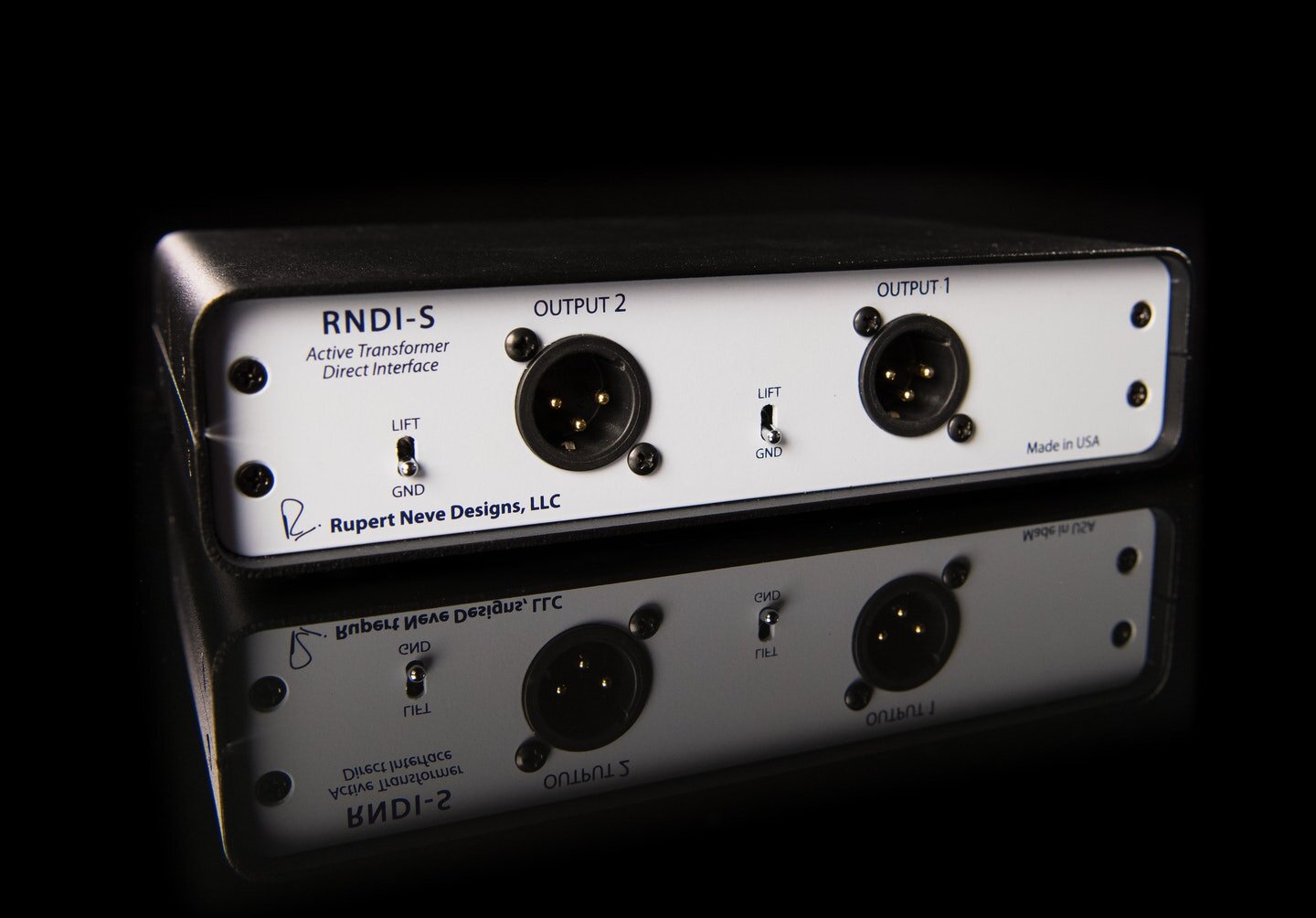
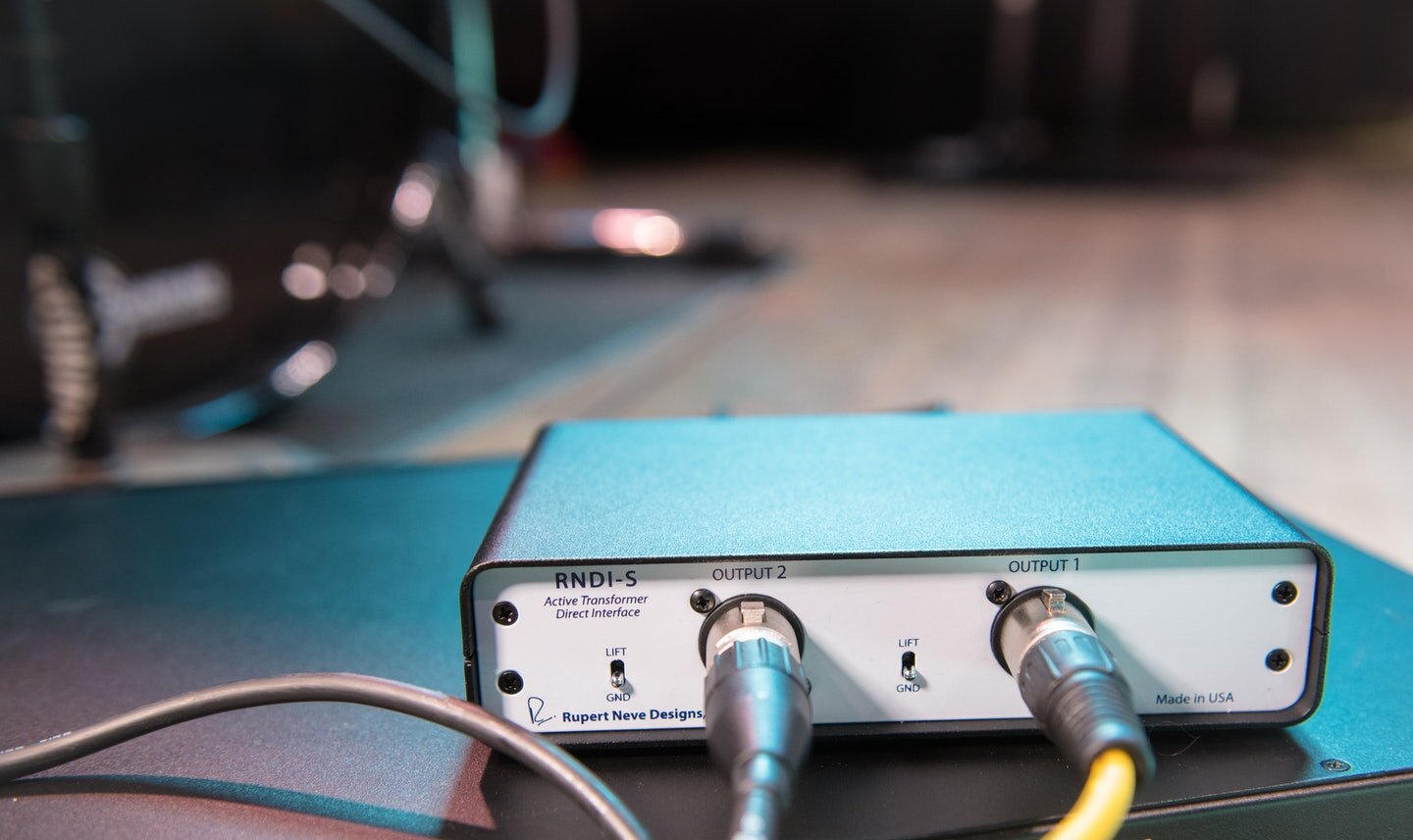
CONTROLS & I/O
2x ¼” INPUTS
Hi-Z unbalanced inputs with 2.2M Ohms input impedance.
2x ¼” THRU JACKS
Parallel ¼” jacks used to send signal to an amp or speaker.
3.5MM INPUT
Stereo unbalanced input with 95 kOhm input impedance. Ch 1 = Tip, Ch 2 = Ring.
INPUT SELECT
Selects ¼” Input or 3.5mm Input.
48V POWER LEDS
Indicates that +48V phantom power is present for each channel from the connected mic preamp(s). Power must be supplied independently to both channels.
GROUND LIFT
Isolates the XLR Pin 1 from the circuit ground for each channel.
OUTPUT
Transformer-balanced XLR output. Impedance <40 Ohms. Phantom power to the RNDI-S is supplied through these connections.
FEATURES
Custom Rupert Neve Designs transformers for rich, powerful tone
Exceptional performance with any instrument
Unrivaled clarity from discrete FET amplifiers
Drives long lines with minimal loss
Rugged steel frame built for life on the road
Powered by dual 48V phantom power
Excellent phase coherence at all frequencies
REVIEWS
“I mix FOH for a prominent country artist. We tour and play over 200 shows a year and we go through a lot of gear. I ran into someone who was using this for his bass DI line and I heard him do a comparison. I was sold instantly. So I finally bought one to use for an acoustic line in between the output of a Shure UR4D and the input of a Midas DL431. It literally took the tone and changed it immensely. Sounded like I had plugged it into a console in a studio. So I started progressively changing every DI on stage over to RNDI's. Today, I use 7 channels of RNDI for all my direct signals on stage. I haven't changed them all over just yet, but I swear I'm getting there. Eventually every DI line on deck will be RNDIs and I've never been happier, truly. The tone is truly untouchable.”
Joey Diehl
“It’s an incredible unit. Pretty much everything I do is DI – synths, guitar, bass – and this is the best starting point for that because you have the most honest representation of the original performance and the instrument possible…there’s this weight to the low end and a sheen to the top end that’s very pleasing. It doesn’t get brittle, and the low end stays tight…it’s a fantastic DI.”
Tycho, Musician
“I’ve been using the RNDI for years – the best thing that was ever created. I play the bass guitar, and this is what I use all the time, for everything I do. For the Wailers band, we have about eight of them, and we use them for they keyboards and the triggers. I’m a huge fan of Rupert Neve.”
Aston Barrett Jr, Bass
The Wailers
“I'm still in disbelief as to how much of a difference there can be between two high quality direct boxes. This one is miles above everything else I have ever used. The difference is NOT subtle. Absolutely love it!”
Fred St-Gelais, Producer
Celine Dion, Marc Dupré, The Masked Singer
“…my secret weapon…it’s just something where I have no words for it. The magic of the color…it goes down to 12Hz, or 10Hz…you can’t believe the sonic colors you get out of it.”
Snow Owl
The World of Hans Zimmer
“I had quite literally no expectations of a DI changing my sound. And what happened was actually mind blowing. I got the RNDI-8 and RNDI-S installed, connected all the gear, flipped on phantom to power them and hit the first note on the PS-3100 and it was like I had wool earmuffs taken off - everything was so damn clear. There was clarity to it. I always heard the sound before, but now I was experiencing the sound. At the risk of sounding too much like a nerd, the DI’s made making music a full body experience.”
Six Missing
“Takes my pedalboard to the next level of clarity and headroom.”
“Excellent piece of gear. Very solid construction, zero noise, crystal clear signal.”
“I did some tracking last night with a Korg Grandstage through the RNDI-S and holy smokes brothers and sisters this box is amazing. Normally I add a lot of pro grade plugins on my piano track, but with this box in front of it, I added nothing and it sounded perfect. So good in fact, I had to come here an write this review. The price is steep but worth it. If your looking for the best DI on the market - you've found it.”
“WOW. So THAT is what my Nord is supposed to sound like. So THAT is what my Montage should sound like. So THAT is what my bass and wurly should sound like. Game changer.”
“As far as my guitar amp went (and its tone, not so much my talent!), the RNDI-S skyrocketed it to the next dimension; the place I'd been trying to coax it for a while now without success. I used to get so frustrated with that amp, which I felt was the culprit in a closed-off, dull, and sluggish sound. It seems that the Neve here fixes whatever issue in the signal chain that was preventing the amp from singing its fullest song. The resulting guitar sound now saturates completely and lights up the whole room - not just the inside of the cabinet. I was pretty floored by it all. I will just say that for the next few months or so, I will probably be getting out of bed in the morning thinking of doing things now made possible in my setup by this amazing machine.”
Customer Reviews via sweetwater.com

SPECIFICATIONS & DOWNLOADS
Note: All specifications are typical.
NOISE (22 Hz - 22 kHz, Un-weighted)
Better than -110 dBV
INPUT IMPEDANCE
Instrument Input: 2.2 Megohm
3.5mm Input: 95 Kilohm
OUTPUT IMPEDANCE
Less than 40 Ohm
FREQUENCY RESPONSE
+/- 0.25 dB from 28 Hz – 60 kHz
+/- 1 dB from 14 Hz – 90 kHz
-3 dBu below 5 Hz
MAXIMUM INPUT LEVEL
Instrument Input: +20.5 dBu (8.2 Volts RMS) Typical
MAXIMUM OUTPUT LEVEL
+11.5 dBu Typical
TOTAL HARMONIC DISTORTION + NOISE
@ 1 kHz, +20 dBu input level: 0.25% Typical (2nd and 3rd Harmonic)
@ 1 kHz, -20 dBu input level: 0.015% Typical (2nd and 3rd Harmonic)
@ 20 Hz, -20 dBu input level: 0.75% Typical (2nd and 3rd Harmonic)
POWER REQUIREMENTS
4.5mA Per Channel @ +48VDC
MOUNTING OPTIONS
19” Rack Shelf Mounting Option
4 hole pattern (bottom of unit) for 6-32 machine screws
UNIT DIMENSIONS
5” W x 7” D x 1.75” H
(12.7 cm W x 17.8 cm D x 4.5 cm H)
UNIT WEIGHT
2.5 lbs. (1.1 kg)
SHIPPING DIMENSIONS
10” W x 8” D x 3” H
(25.4 cm W x 20.3 cm D x 7.6 cm H)
SHIPPING WEIGHT
3.5 lbs. (1.6 kg)
FREQUENTLY ASKED QUESTIONS
It is possible to run a professional line-level signal into the RNDI-S. Please keep in mind that the signal may need to be attenuated pre/post the RNDI-S to avoid clipping.
No, it is a passive Y split directly from the input. When using the THRU output with an instrument that has passive pickups, we always recommend you double-check the sound with & without the THRU connected to make sure you aren’t experiencing a loading issue. Loading the pickups can potentially reduce high frequencies, so it’s always best to make sure this isn’t happening before you record something!
No. It is true that the higher input impedance of an active DI will generally result in greatly enhanced frequency response on a passive bass, but there are still advantages to an active DI on active basses as well. We recommend testing for yourself and letting your ears decide what tool works best.


